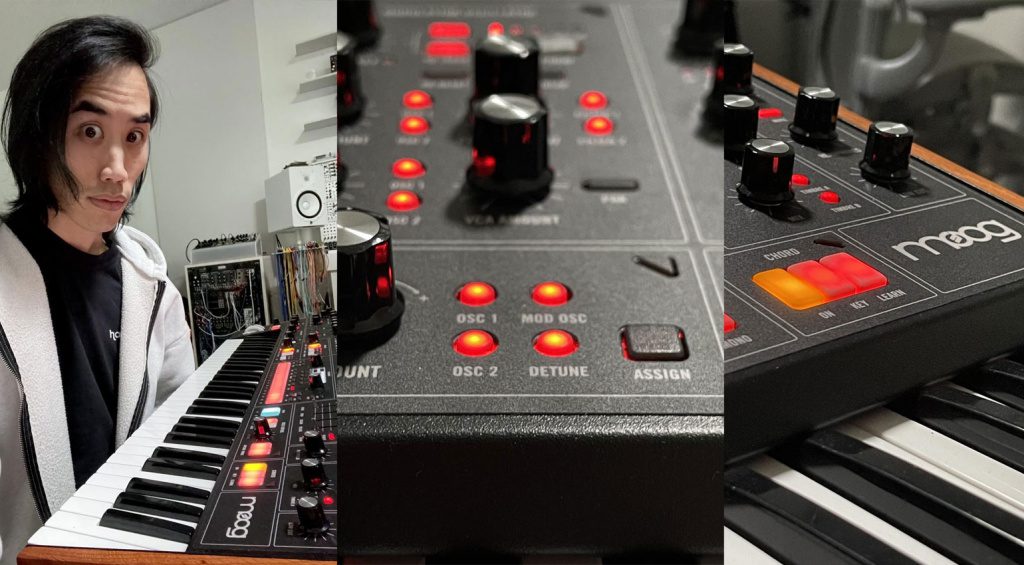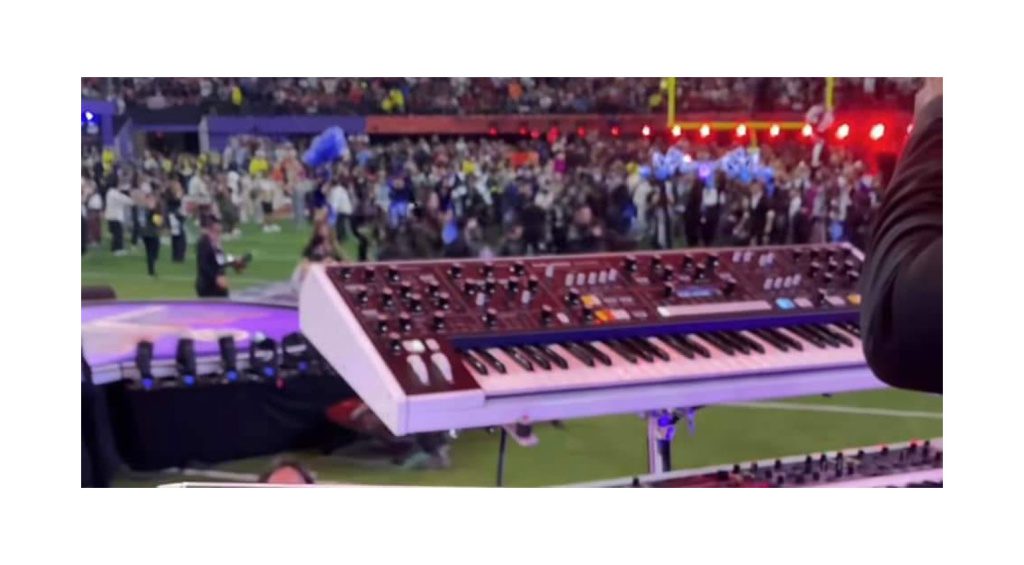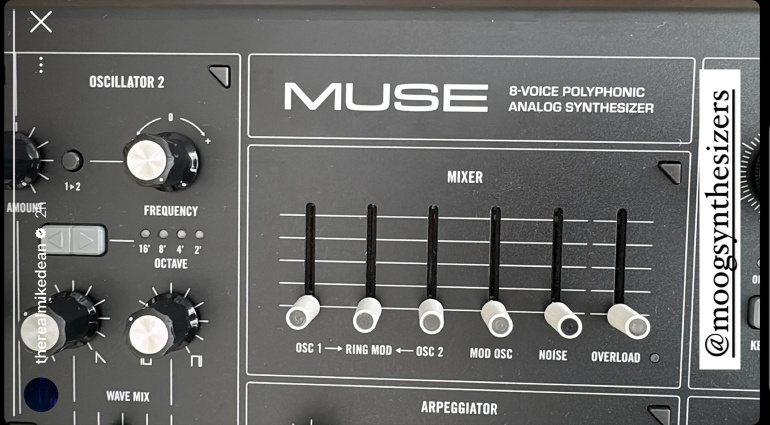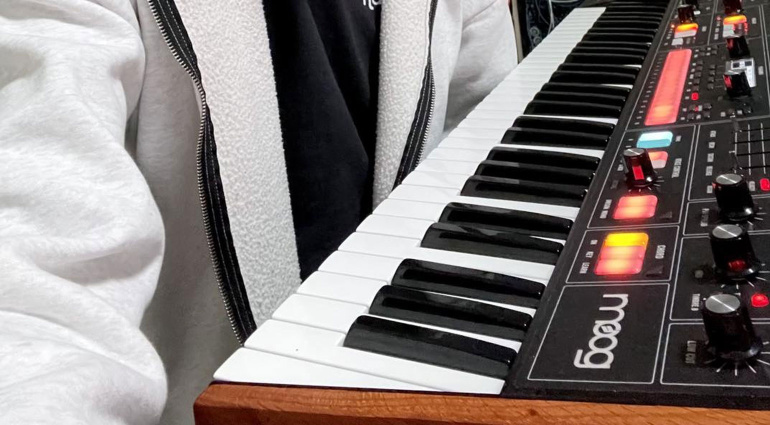The Moog Mirror, which accidentally debuted at the Superbowl Halftime Show, is now apparently called the Muse.
Moog Muse?
Update (8 April 2024): The Mirror is now the Muse. Synth-loving music producer Mike Dean shared an image on his Instagram Stories showing the mixer section of what seems to be a new eight-voice polyphonic Moog. It clearly says Muse and not Mirror. This would be in keeping with Moog’s female-centric naming scheme, particularly if the new instrument really is a polyphonic synth based on Matriarch architecture, as rumoured.

Looking at the picture, which seems to show the mixer section of the panel, we can see that it has two oscillators, ring modulation, an oscillator modulation slider, noise and something tantalizingly called “Overload.” Below the mixer, there appears to be an Arpeggiator. The shape and styling of the sliders are very Polymoog-esque.
Keep in mind that nothing about this release is confirmed and it could all come to nothing. But an affordable polyphonic Moog is certainly something to get excited about – even just the possibility of one.
(Original article): With all the hoo-har around Moog and the InMusic buyout, it’s great to get positively excited about the possibility of a new Moog synth. Apparently, it was seen as part of the huge array of synths that were on stage for Usher’s halftime show. I’m not sure about that. There are certainly a lot of recognisable Moog products on stage, but you’ve got to have a keen eye to spot a previously unreleased one.
Mystery Mirror Moog
Regardless, Andrew Huang has thrown embargoes to the wind by posting a selfie of him sitting in front of an unknown Moog synth. What could it be? Andrew isn’t telling us – yet. Reports from the ether suggest that it will be called the Moog Mirror, it will have 8-voices and is based on Matriarch architecture.

What we can see is a bunch of chewably lit, lozenge-sized buttons, a close-up of some classic Moog knobs and metal panelling and a five-octave keyboard with wooden cheeks. It looks very smart. It doesn’t look like something as high-end as a Moog One or MemoryMoog, in fact for me it reflects more of a Prophet-5 sort of vibe. There is a screen you can just see, and those buttons are likely to be preset selections. There’s a good bunch of controls, but not a crazy amount. It has two oscillators, a Chord mode and at least a Unison mode, all of which point to some polyphony.

According to commentators, we’re supposed to be looking at the synth named Mirror underneath the Matriarch on the left. The synth that looks very much like a Roland Jupiter-X. I’m sure these things will become clear.
This image just appeared on Facebook from Sounds-for-Synths.com that is positioned very differently from the one we’re supposed to be looking at. I think this is the synth on the far right, just above the corner.

What’s coming?
Could Moog be returning to the market with a lovely new polysynth named Mirror? And could it possibly be a more mid-market machine rather than an aspirational premium instrument that only the few can afford? Maybe that’s the hope that InMusic brings to the table – an affordable poly-Moog.
The rumours, guesswork, and confident declarations from synth-heads will be abounding on social media until we get the official information. It’s certainly more exciting than who won the Football.
Image Sources:
- Moog Muse: Mike Dean
- Mystery Moog: Andrew Huang
- Can you spot the mystery Moog?: Apple
- Moog Mirror?: Sound-For-Synths.com







